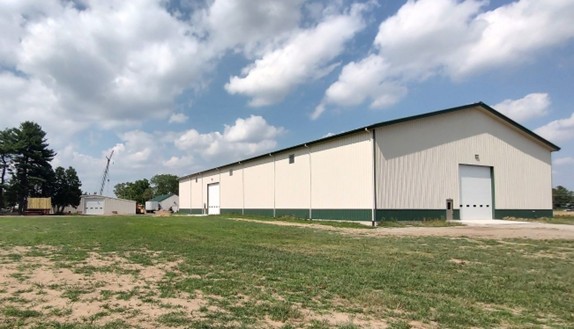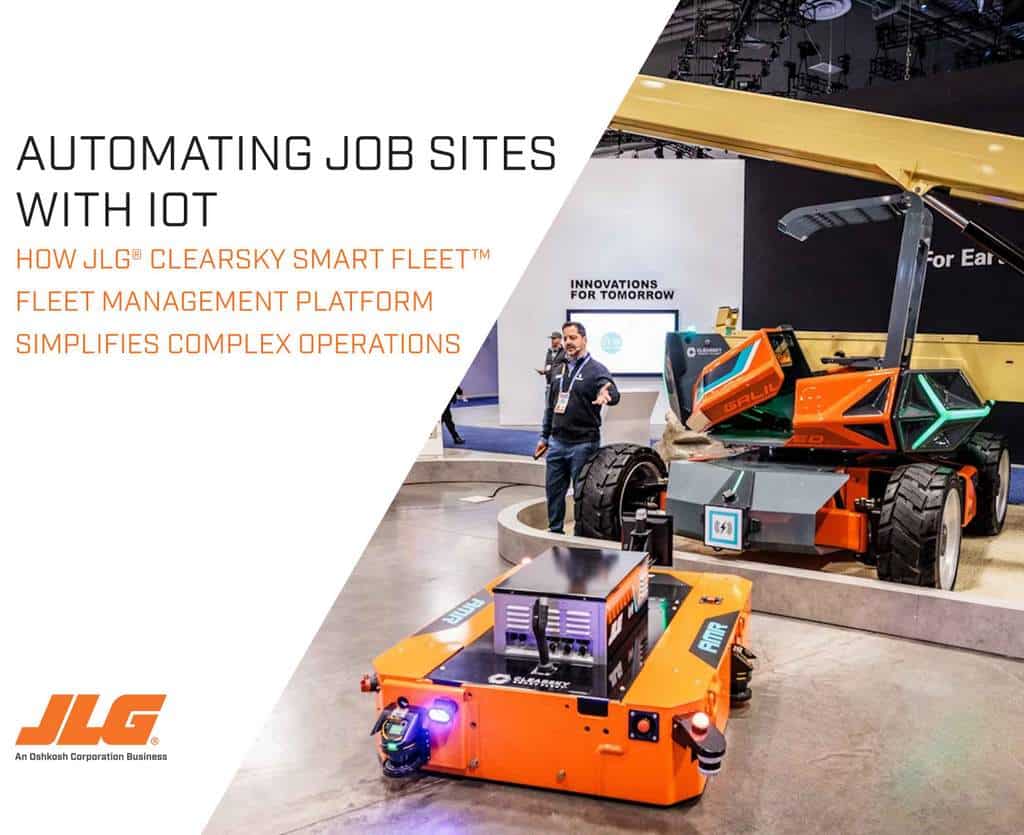Why Some Technology Just Isn’t Meant for Compact Equipment

Tech That Probably Won’t Trickle Down Anytime Soon to Small Earthmoving Equipment
We covered trickle-down tech recently, features that start out on larger machines and make their way to the compact versions of those machines over time. But not all tech trickles. There are three main reasons why not all technology comes down to compact machines.
- Cost. The cost of the technology is not justified by the applications or as a percentage of the machine cost.
- Space and performance. Compact machines often don’t have the physical space or performance to meet the needs of advanced technology.
- Low demand. Customers of compact equipment don’t buy what they can’t use or what gets used only occasionally.
If you know your applications require certain features, there are three main ways to acquire those features.
- Factory-installed. This may require selecting a model where those features are standard or checking a box on an order form to include optional features on the machine you’re ordering.
- Dealer install. Not everything can be upfitted to an existing machine, but dealers know which features can be added and have the parts and expertise to do so.
- Third party. There are a ton of specialty manufacturers out there, especially of attachments. If you have an application in mind that requires a unique feature or attachment, odds are good that someone is already making it. Search the internet. Ask your dealer. Ask your competitors and peers. Someone knows where to get what you need.
The following example is an oversimplification, but it is helpful, nonetheless. Consider a 16-lb sledgehammer, a 16-oz framing hammer and a 5-oz tack hammer as analogous to large, mid-size and compact equipment. The handles for each hammer are scaled to the head. Furthermore, a hammer is a system. The sledge has a hickory or fiberglass handle, possibly with a steel wedge, possibly with vibration isolation, possibly with overstrike protection. The framing and tack hammers have similar design choices to create a working system. How much more sophisticated are the design choices required to ensure that a skid steer or compact wheel loader works effectively as a system? Just as you wouldn’t want a 36-in. sledge handle on a tack hammer, you wouldn’t necessarily want 3D machine control on a skid steer.
Here are insights from two major OEMs on the tech disparity between compact machines and their bigger cousins.
JCB North America: Rules and Exceptions
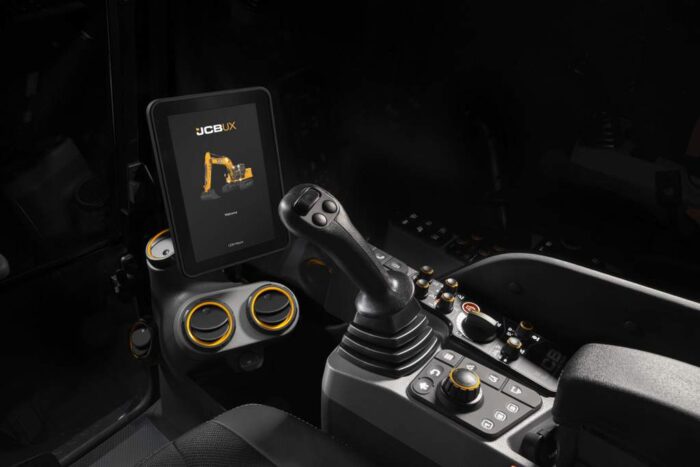
Lee Tice, product manager, JCB North America, says there has been a steady flow of tech from larger machines to compact models over the past decade. He cites EH controls, telematics and attachment management systems as examples. “But not every innovation from larger equipment has followed the same path — and for good reason.”
Several good reasons, in fact.
Some upgrades are cost-prohibitive. “A $60,000 or $70,000 upgrade such as full machine control can rival or exceed the cost of the machine without adding bottom-line benefits since for most compact equipment applications, it would be underutilized.”
Some upgrades have limited demand. The compact market is heavily populated with owner-operators, rental fleets and municipalities, “all of whom prioritize durability, reliability and ease of use over complex, high-cost technology.”
Compact machines have space and capacity constraints. A tiltrotator can significantly reduce lifting capacity, and compact excavators don’t have excess lift capacity to spare. Automated refueling systems and expanded control panels may not physically fit.
Compact Machines and Large Machines Have Dissimilar Use Profiles
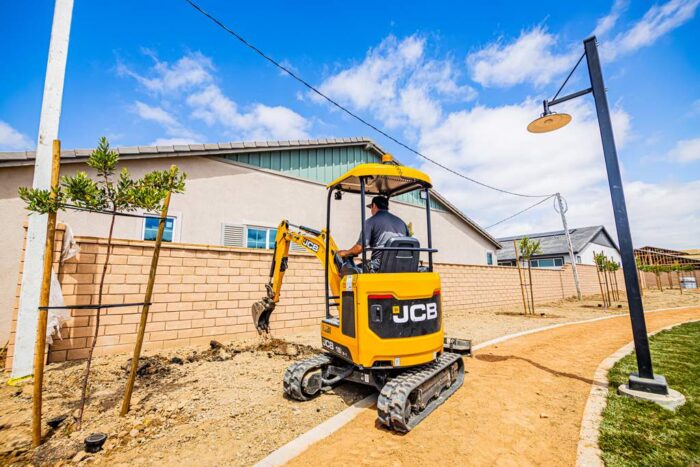
“Larger machines often work on infrastructure projects with long runs and tight tolerances. Compact machines are typically used for more varied, short-term tasks such as trenching, backfilling, site cleanup and grading,” says Tice. “While precision still matters in some applications, the scale and frequency of those applications don’t always justify the added investment.”
Those are the rules. Here are the exceptions. Wholesale adoption of premium technology in the compact sector is unlikely, but there are targeted use cases where the investment is justified. “For example, contractors building athletic fields or golf courses often require highly precise grading. In these cases, features such as grade control can provide tangible benefits and may be worth the added cost.”
The same thing may be true for landscapers or site prep specialists who consistently work with tight tolerances. “They may find value in plug-and-play systems developed by aftermarket manufacturers. These systems offer a balance of solid performance at lower cost than full OEM integrations.”
Tice says that just as improvements are ongoing for large equipment, compact machines will continue to see advances in technology and features. “Many of the advancements from larger equipment are expected to arrive — selectively and with clear purpose.” Examples may include the continued development of EH hydraulic systems, simplified attachment recognition and intuitive operator assist features. “Connectivity will also expand, with telematics systems such as JCB’s LiveLink offering deeper integration, predictive maintenance tools and data-driven fleet insights.”
John Deere Construction & Forestry: SmartDetect No, SurroundView Yes
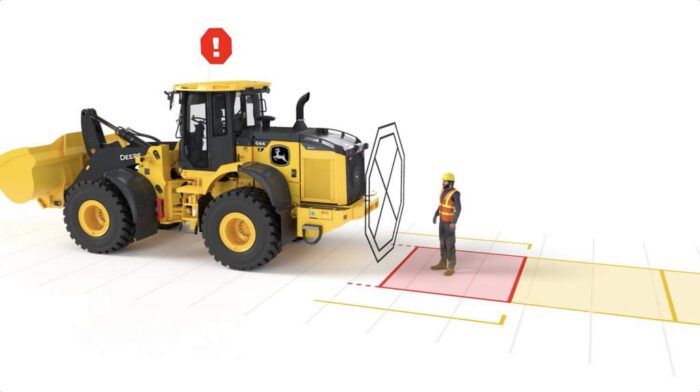
Emily Pagura, product marketing manager at John Deere, says that the company’s SmartDetect is an excellent example of technology that has great value in large machines but may not be the best fit for some compact models. SmartDetect combines integrated digital cameras and machine learning to give operators better situational awareness. “The stereo camera on the rear of the machine enables depth perception to identify and classify known objects, further improving awareness.” The system provides the operator with detection alerts. Visual cues and bounding boxes are displayed. “By identifying fixed or moving objects such as people, poles, structures and other machinery, vision technology provides critical information to the operator.”
SmartDetect is currently available only on mid-size and large John Deere wheel loader models. “We started the rollout of this technology on this particular size class because a large wheel loader can spend approximately 40 percent of its working life operating in reverse,” says Pagura.
SmartDetect is also a good fit for the aggregates market, where many wheel loaders are used. “We knew customers in the aggregates space would be excited and willing to invest in the feature. Compact equipment wasn’t the right fit for this introduction because they are less commonly found in quarries and aggregates settings.” Based on excellent customer feedback from larger wheel loader customers, “we’re looking forward to adapting the system to different machine forms in the future.” Whether “different machine forms” includes compact models was not specified and may not have yet been determined at the time this was written.
While SmartDetect is not currently available on Deere’s compact machines, SurroundView is available on large-frame, P-Tier skid steers and compact track loaders. Pagura describes this as a more general approach to vision systems in this part of the market. SurroundView has a 270-degree camera system with a dedicated monitor. “Again, the feature-product-market fit makes sense here,” she notes.
Richard Ries is a freelance writer for Compact Equipment.
Find out more about some of the largest skid steers on the market.

